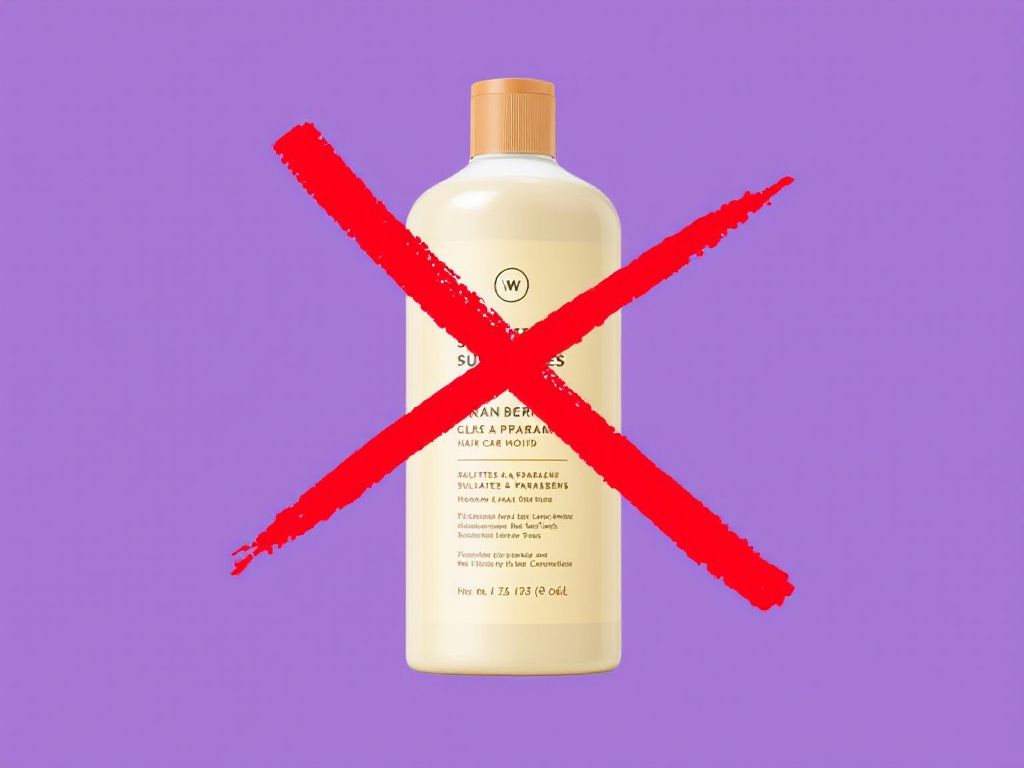
Hey there! Ever stood in the hair care aisle, wondering what on earth all those complicated ingredients on shampoo bottles mean? Don’t worry, you’re not alone. Today, we’re diving into two of the big names you see plastered on hair product labels everywhere: sulfates and parabens. These guys are often at the center of debates about what’s good or bad for your hair. But what exactly are sulfates in shampoo, and why do people care so much about them? Stay with me, and I’ll lay it all out for you in straightforward terms.
What are Sulfates and Why Are They in Shampoo?
Let’s start with the basics. Sulfates are basically like that vigorous scrub you give your kitchen counters when something spills. They’re workhorses meant to clean by breaking down dirt and oil. In hair care products, they’re what make your shampoo lather up nicely—super satisfying, right?
Common Types of Sulfates
There are many types out there, but here are the usual suspects that hang around on your shampoo label:
- Sodium Lauryl Sulfate (SLS)
- Sodium Laureth Sulfate (SLES)
- Ammonium Lauryl Sulfate
So, when you pour that dollop into your hand and it foams into a rich lather, it’s the sulfates working their magic. But wait! Here’s where it gets interesting.
The Downside to That Rich Lather
All that lathering is the result of sulfates cutting through oil and dirt. While that sounds great, it can be a bit too good. You see, sulfates are effective, but sometimes they overdo it by stripping your hair and scalp of natural oils. For those with sensitive skin, this might lead to irritation. It can also result in dryness for those with curly or color-treated hair. Think of it as overdoing a diet cleanse—not always a good idea.

Parabens in Hair Products: Friends or Foes?
Now onto another big player in the hair care game—parabens. If sulfates strip the oil off your scalp, what’s the deal with parabens? Let me break it down for you real smooth.
The Paraben Breakdown
Parabens are preservatives used to extend the shelf life of products. In short, they keep your shampoo from going bad too quickly. Sounds useful, right? Nobody wants funky, moldy shampoo.
The Types You’ll Meet
Common variants include:
- Methylparaben
- Ethylparaben
- Propylparaben
- Butylparaben
Each of these serves pretty much the same purpose—protection from fungi and bacteria. Now, the controversy surrounding parabens is all about health concerns. While their exact role in health issues is debated, some studies suggest they can mimic estrogen in the body, leading to questions about their long-term effects.
But Why Should You Care?
Here’s the thing—what you put on your hair matters because it directly affects your hair’s health and look. If you find your hair is looking lackluster or you suddenly experience scalp issues, sulfates or parabens might be culprits worth investigating.

**Some effects to watch out for:**
- Irritation or sensitivity on the scalp
- Excessive dryness or oiliness
- In some cases, fading hair color (especially important if you color-treat your hair regularly)
Navigating the Hair Product Jungle
So, let’s say you’re standing in the shampoo aisle (again). How do you know what’s right for you? Here’s where personalized choices kick in—there isn’t a one-size-fits-all answer, unfortunately.
Making Informed Decisions
When scan your shampoo options, think about the following:
- Hair Type: Is your hair fine, thick, curly, straight, color-treated? All these play a massive role.
- Scalp Sensitivity: Does your scalp frequently get irritated? Maybe gentler options are your thing.
- Preferences on Ingredients: Personal health beliefs and lifestyle choices matter; organic options could be more appealing if you’ve got health and environmental concerns in mind.
Switching to Sulfate- and Paraben-Free
Alright, you’re convinced—or at least curious—about making a switch. How do you do it?
Transitioning Your Hair Routine

Switching out products might take time, but the potential benefits can be worth it. Here’s a handy list on how to ease into sulfate- and paraben-free hair products:
- Research: Get familiar with brands that avoid these ingredients. Brands like SheaMoisture or The Honest Company not only offer alternatives but are committed to transparency.
- Patch Testing: Before going all-in, do a patch test to ensure the product doesn’t irritate your scalp.
- Gradual Transition: Slowly integrate new products into your routine. Sudden full-on changes can stress your hair. For instance, start with shifting your shampoo, followed by other hair care items like conditioners.
- Monitor Results: Notice changes. Is your hair responding positively? Less itchy, vibrant, healthier feeling? Take mental notes, and adjust if needed.
Alternatives and Adjustments
Don’t fret if things don’t go perfectly initially. Natural isn’t ideal for everyone—you might find slight drying or that your product doesn’t lather as much. It’s normal; fewer suds don’t equal poor cleaning.
Incorporate deep conditioners to support natural curls or replenishing masks for hydration if dryness lingers. Trust me, these simple tweaks can make surprising differences.
The Big Picture: Balance is Key
At the day’s end, shampoos work best as part of an overall healthy hair care approach. Beyond just scanning for “sulfate-free,” give your whole hair care regimen a once-over. Ensure it supports your hair goals, whether luscious curls, vivid colors, or a sleek look—minus the unwanted harshness.
Being aware also helps you dodge some common mistakes—like, don’t sporadically mix ingredients that might clash or unnecessarily wash your hair daily. Over-washing means stripping your hair more, even with milder products.
Conclusion: Embrace What Works for You
If you’ve been pondering whether all shampoos are created equal, I hope this conversation offered clarity and suggestions. Remember, sulfates and parabens have their roles; it’s up to you to weigh the needs of your hair and what feels right for your lifestyle. Keep experimenting to find what makes your hair feel like its fabulous best!
Ultimately, understanding your hair’s needs and experimenting with what works best can make a world of difference. Those concoctions might look confusing at first, but now you’ve got the inside scoop to navigate the choices confidently. Happy shampoo hunting, and congratulate yourself for caring about what’s in your hair care.
Frequently Asked Questions
How often should I wash my face mask to prevent maskne?
To prevent maskne, it is crucial to wash your face mask regularly. For fabric masks, wash them after every use, similar to how you would wash your underwear[2][3][4]. Disposable masks should be tossed after each use to prevent the buildup of bacteria and other contaminants[3][5>.
What type of skincare products are best for preventing maskne?
For preventing maskne, use skincare products that are oil-free or noncomedogenic. These products, such as gentle cleansers, moisturizers, and sunscreens, help prevent clogged pores and reduce the risk of acne. Look for products containing salicylic acid or benzoyl peroxide for their acne-fighting properties[1][3][4>.
How can I reduce friction and irritation caused by wearing a face mask?
To reduce friction and irritation, choose a mask that fits well and is made from breathable fabrics like cotton or bamboo. Loosen the mask straps, use pads under the straps, or consider a headband-style mask to minimize friction. Taking brief breaks to remove the mask and allow your skin to breathe can also help[2][3][5>.
What are some additional tips to prevent maskne while wearing a face mask?
In addition to regular mask washing and using the right skincare products, avoid touching your face, skip makeup or use noncomedogenic makeup, and moisturize your skin to keep it hydrated. Also, limit the use of active ingredients like retinol or benzoyl peroxide during the day when wearing a mask, and consider using a topical antimicrobial cream to prevent bacterial buildup[1][3][4>.
References


Leave a Reply